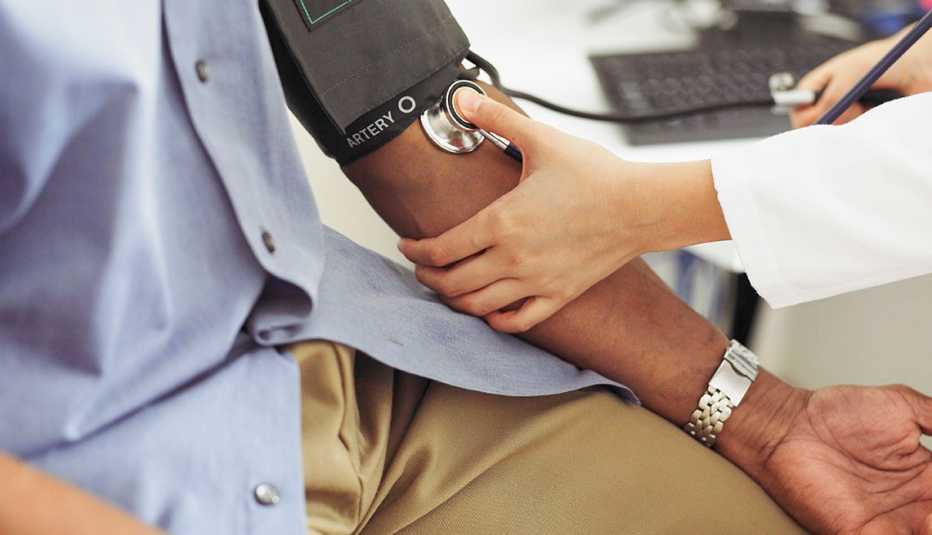Staying Fit


Hypertension, or high blood pressure, is one of the most common health conditions plaguing American adults. And as a key risk factor for heart disease — the world’s leading killer — it’s also one of the most dangerous.
In the U.S. alone, more than 500,000 deaths each year are linked to high blood pressure, according to the Centers for Disease Control and Prevention (CDC). Globally, the death toll tops 7 million.


AARP Membership— $12 for your first year when you sign up for Automatic Renewal
Get instant access to members-only products and hundreds of discounts, a free second membership, and a subscription to AARP the Magazine.
But there is good news: High blood pressure is both preventable and treatable once diagnosed. Here are five reasons why you shouldn't delay getting your blood pressure checked.
What is high blood pressure?
| Category | Systolic Blood Pressure | Diastolic Blood Pressure |
| Normal | <120 mm Hg | <80 mm Hg |
| Elevated | 120-129 mm Hg | <80 mm Hg |
| Stage 1 Hypertension | 130-139 mm Hg | 80-89 mm Hg |
| Stage 2 Hypertension | ≥140 mm Hg | ≥90 mm Hg |
1. The "silent killer" rarely comes with symptoms
Unlike other health conditions that pop up with warning signs, high blood pressure (defined as 130/80 mm Hg or higher) rarely comes with symptoms, which is how it earned the name “the silent killer.” In fact, about 1 in 3 people who have hypertension don't know it and therefore aren't being treated for it, according to the CDC.
The only way to know for sure if you have high blood pressure is to check your numbers. If you are 40 or older, you should be doing this at least once a year, federal guidelines state. A health care provider can measure it in the office; your local pharmacy may also have a blood pressure machine.
Home monitoring is an option, too, and one that many experts recommend — especially if nerves interfere with your readings during routine health appointments. (You can purchase a monitor for under $50.) Just be sure to keep a log of your blood pressure measurements so you can review them with your doctor at your next appointment. And pay attention to how you take your blood pressure: Experts recommend emptying your bladder and avoiding food or drink 30 minutes ahead of time. Also be sure to keep both feet flat on the ground, place the cuff on bare skin and rest your arm with the cuff on a table at chest height.
2. Your risk for high blood pressure increases with age
Several factors can drive up a person's risk for developing hypertension. People with diabetes and obesity, for example, are more likely to develop high blood pressure. Smoking, physical inactivity, drinking too much alcohol and eating too much salt can also increase risk. Family history plays a role, too — so does age.
"That's because the blood vessels kind of stiffen in a way where they're less flexible” as you age, says Nieca Goldberg, M.D., a cardiologist and clinical associate professor in the Department of Medicine at NYU Grossman School of Medicine. And that loss of elasticity drives up the pressure inside the vessels.
Even if you've had healthy blood pressure levels in the past, it's important to stay on top of your numbers as you get older. Once you hit middle age, your lifetime risk for developing high blood pressure is 90 percent, research shows.

































































More on health
Heart Health: News, Tips and Healthy Habits
Information and tips on exercise, diet, and other lifestyle habits to keep your heart healthyEasy, Enjoyable Ways to Boost Heart Health and Lower Blood Pressure
How just stretching, taking baths or enjoying your coffee could lower your risk of heart attack and stroke
Meditation Is Good for Your Physical Health, Too
Breathing exercises and other calming practices can reduce hypertension, pain and more